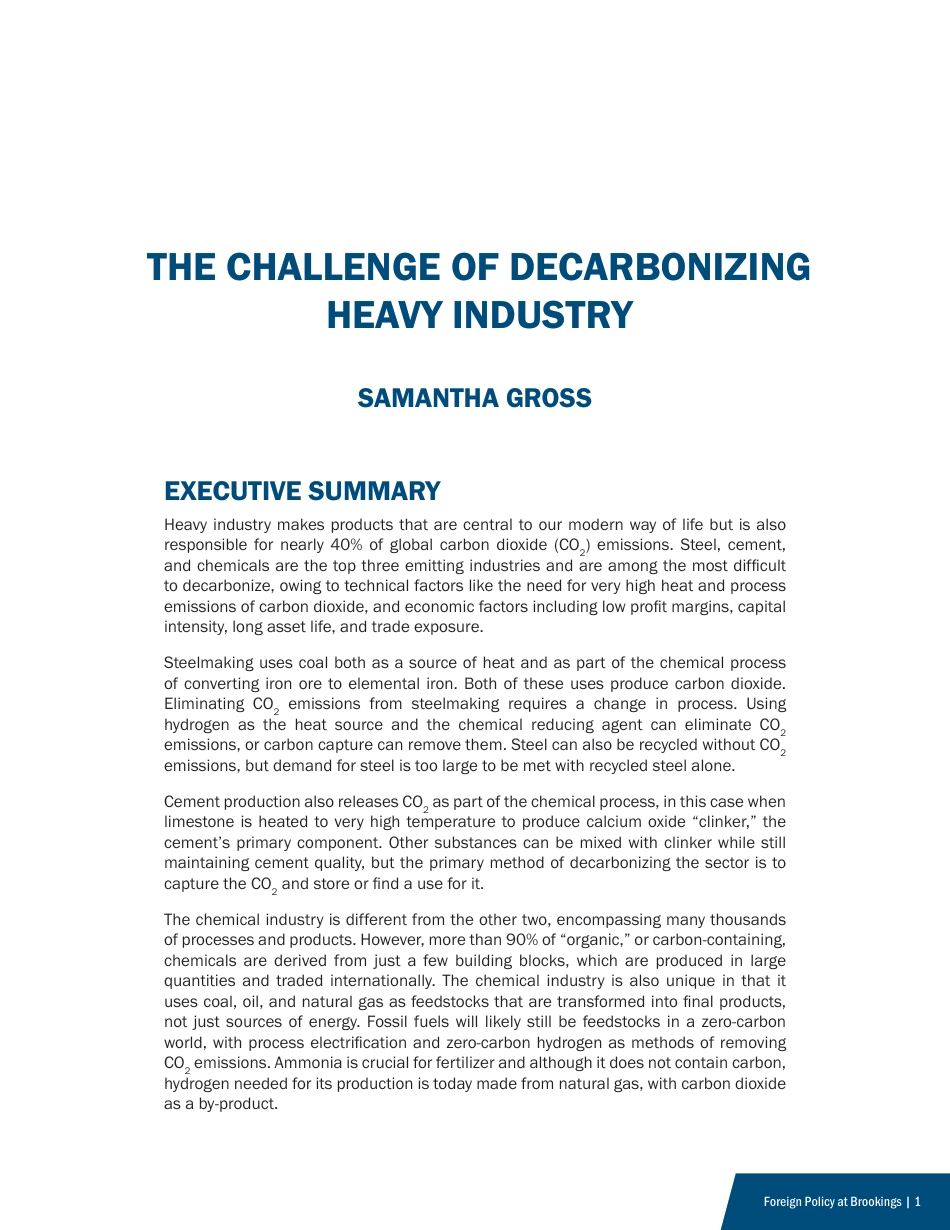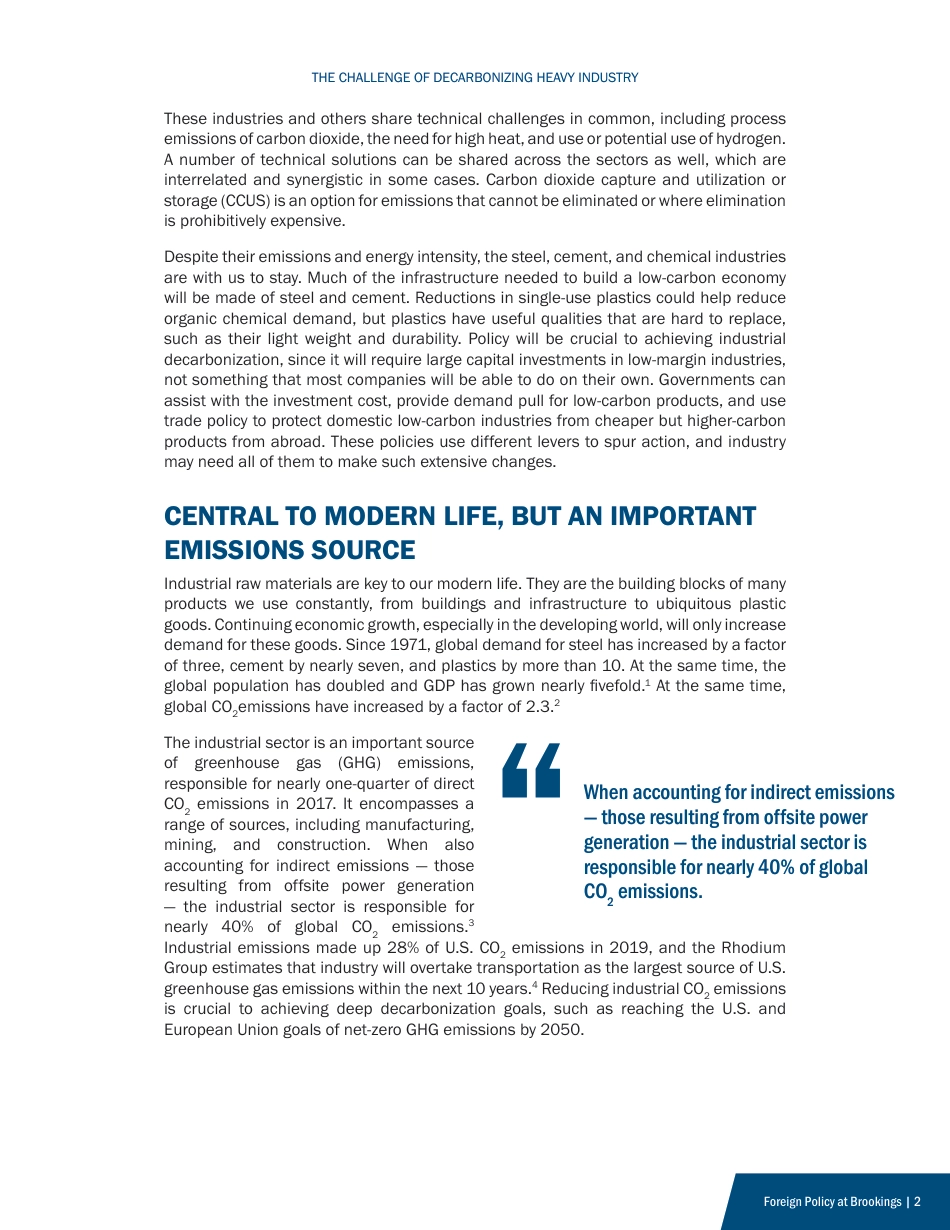THE CHALLENGE OF DECARBONIZING HEAVY INDUSTRYSAMANTHA GROSSENERGY & CLIMATE JUNE 2021Foreign Policy at Brookings | 1THE CHALLENGE OF DECARBONIZING HEAVY INDUSTRYSAMANTHA GROSSEXECUTIVE SUMMARYHeavy industry makes products that are central to our modern way of life but is also responsible for nearly 40% of global carbon dioxide (CO2) emissions. Steel, cement, and chemicals are the top three emitting industries and are among the most difficult to decarbonize, owing to technical factors like the need for very high heat and process emissions of carbon dioxide, and economic factors including low profit margins, capital intensity, long asset life, and trade exposure.Steelmaking uses coal both as a source of heat and as part of the chemical process of converting iron ore to elemental iron. Both of these uses produce carbon dioxide. Eliminating CO2 emissions from steelmaking requires a change in process. Using hydrogen as the heat source and the chemical reducing agent can eliminate CO2 emissions, or carbon capture can remove them. Steel can also be recycled without CO2 emissions, but demand for steel is too large to be met with recycled steel alone.Cement production also releases CO2 as part of the chemical process, in this case when limestone is heated to very high temperature to produce calcium oxide “clinker,” the cement’s primary component. Other substances can be mixed with clinker while still maintaining cement quality, but the primary method of decarbonizing the sector is to capture the CO2 and store or find a use for it.The chemical industry is different from the other two, encompassing many thousands of processes and products. However, more than 90% of “organic,” or carbon-containing, chemicals...



